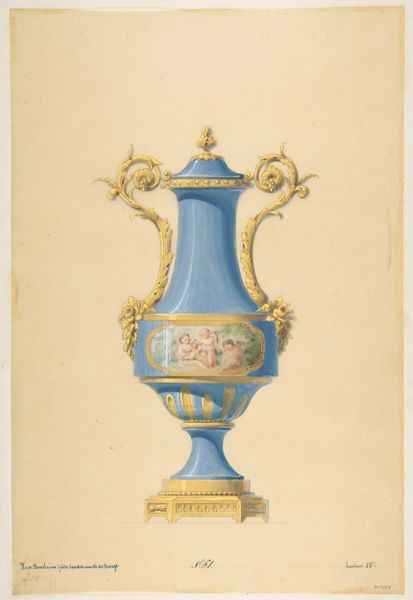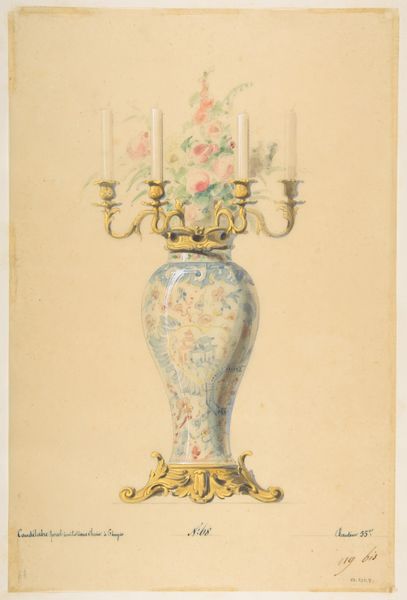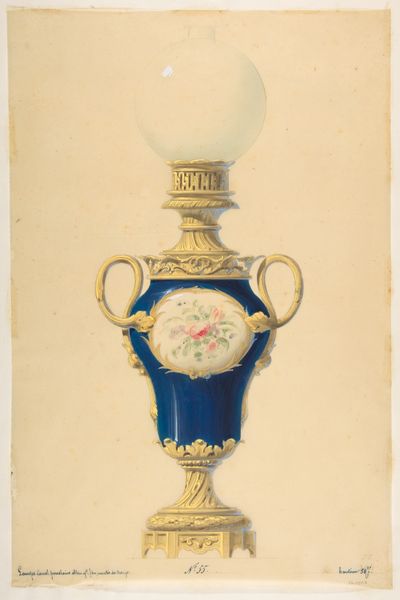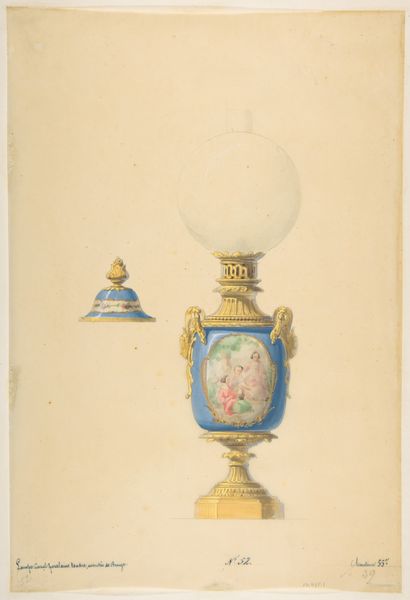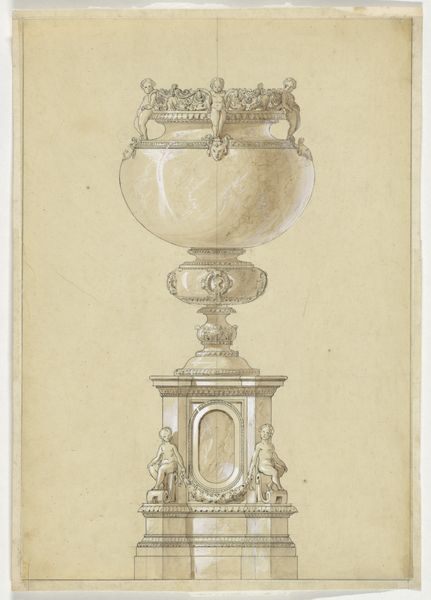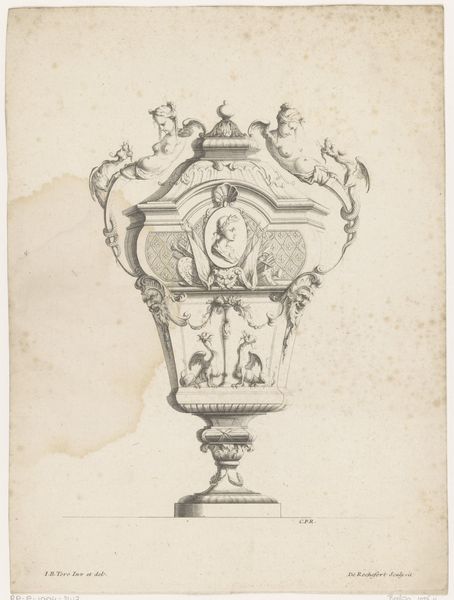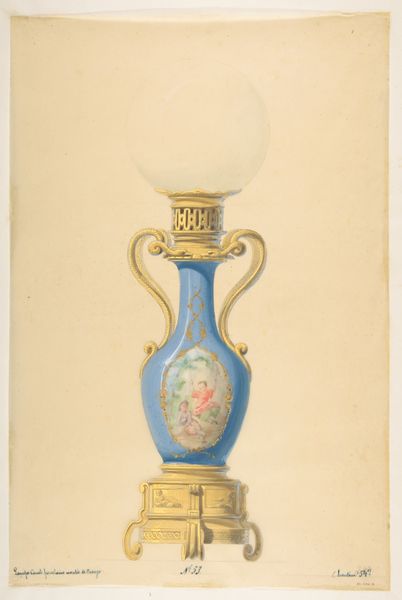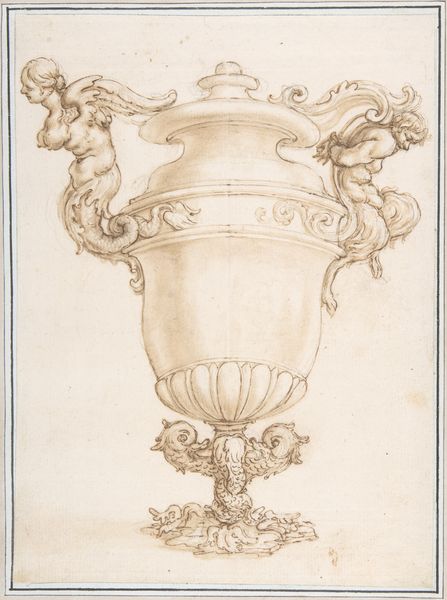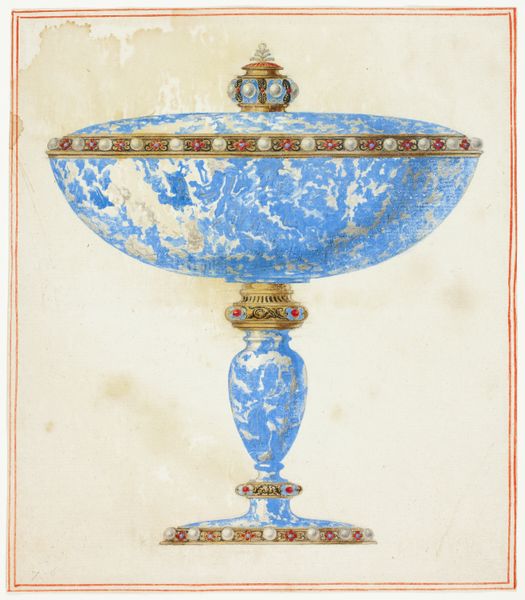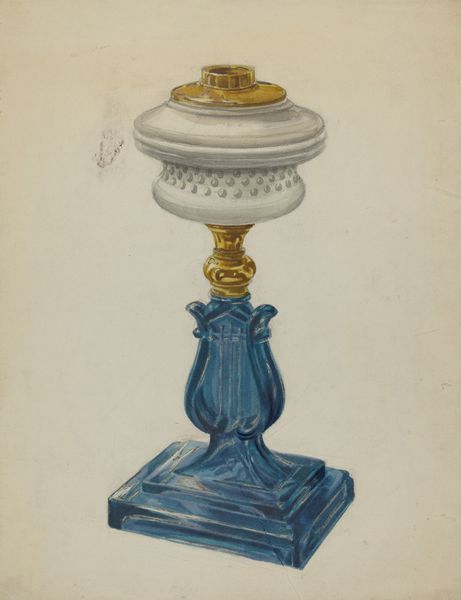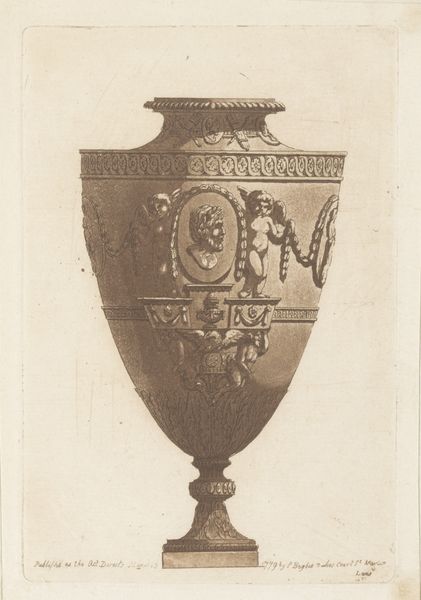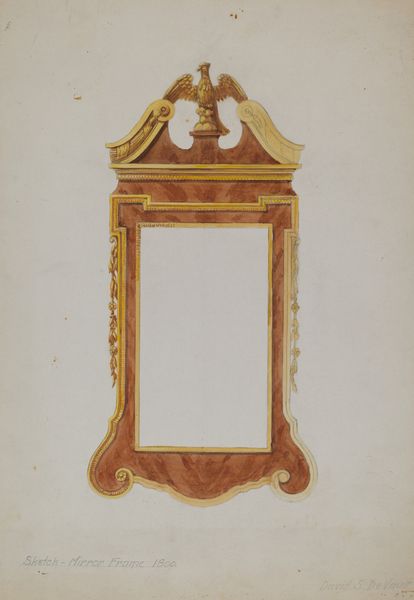
drawing, print, watercolor
#
portrait
#
drawing
#
neoclacissism
#
water colours
# print
#
watercolor
#
coloured pencil
#
decorative-art
Dimensions: sheet: 16 7/8 x 11 5/16 in. (42.9 x 28.7 cm)
Copyright: Public Domain
Curator: Here we have "Design for an Urn," a 19th-century watercolor drawing presently held at the Metropolitan Museum of Art. Editor: My initial impression is a celebration of extravagance! The cobalt blue against that gilded ornamentation makes me think of royalty and the height of formal ornamentation. Curator: Indeed! Its design speaks volumes about the prevailing Neoclassical sensibilities of its time. The symmetry, the carefully balanced proportions—it all underscores the cultural obsession with antiquity. Urns were hardly ever *just* vessels, were they? They were cultural symbols as well. Editor: Precisely! And notice the central painted panel? The cherubs hark back to classical motifs—Cupid and Psyche, perhaps? They suggest themes of love, innocence, even rebirth, loaded meanings within a domestic context. They're not just decoration; they're meant to resonate. Curator: You're right to bring up its purpose. It's not just an aesthetic object; it embodies socio-cultural rituals associated with display and taste, and likely intended to influence those that gazed upon it within the domestic spaces of the privileged. The institution of the home and its power structure become evident when seeing such artifacts. Editor: And I wonder, would the original commissioner of such a work truly see it as simply decorative? This urn functions as a nexus of emotional triggers, connecting present experiences to ancestral heritage. I think it’s also designed to remind someone about love in the passing of loved ones or the potential for passion. Curator: Good point! Though designed in the past, an artwork's meaning is made new each time someone interacts with it, reminding me that power and culture perpetually intertwine in viewing something so seemingly decorative. Editor: I appreciate your reading of power, it helps to show how loaded such ornamentation can be. Ultimately, contemplating the cultural symbols here encourages one to reflect upon one's own beliefs surrounding heritage, emotional resonance, and the ongoing dialogue between past and present.
Comments
No comments
Be the first to comment and join the conversation on the ultimate creative platform.
